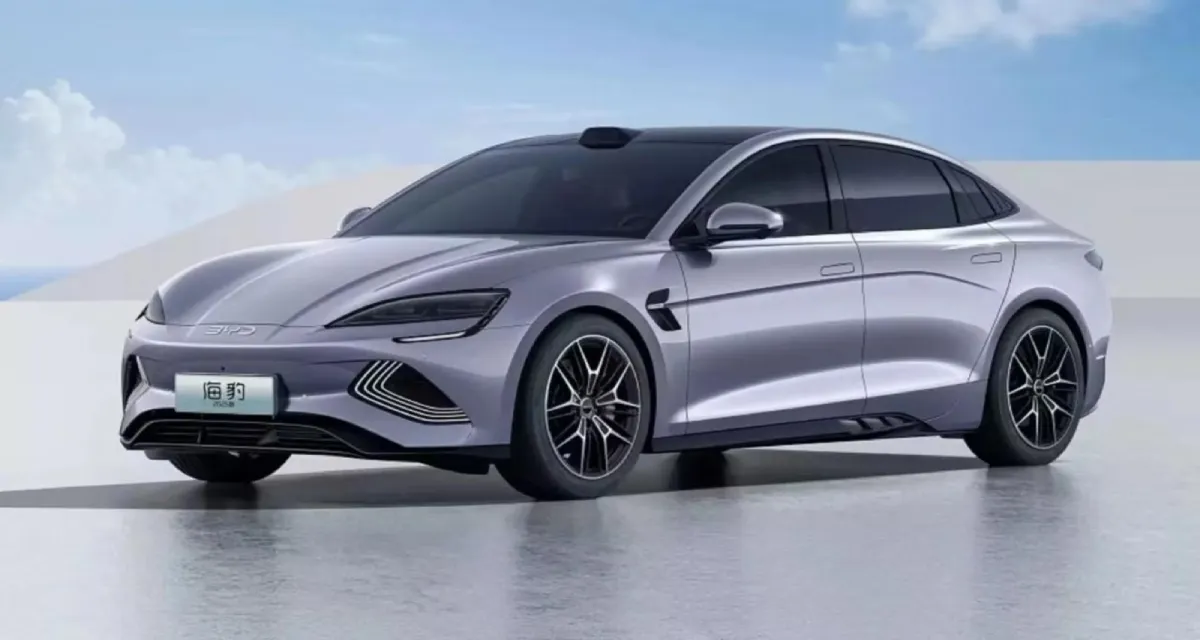

BYD has unveiled the 2025 Seal electric sedan with significant updates, bringing a new level of sophistication and performance to the model. While the exterior changes are minimal, the sedan now features an advanced 800V architecture, upgraded powertrains, and cutting-edge LiDAR technology, setting a new benchmark in the electric vehicle (EV) market.
The exterior of the 2025 BYD Seal EV remains largely unchanged, with the overall body shape, headlamps, and tail lights carried over from the previous model. The most noticeable updates include new alloy wheels and the addition of LiDAR sensors mounted on the roof, which are key to the vehicle's advanced autonomous driving capabilities.
Step inside the 2025 BYD Seal EV, and you'll notice a substantial redesign of the cabin. The dashboard has been completely revamped, aligning it with the design language seen in other models under the Seal family. The new dashboard features a flat vertical panel that spans its width, housing the instrument cluster display.
The steering wheel is now a four-spoke unit, adding a modern touch to the cabin's aesthetics. The large central touchscreen remains a prominent feature, still capable of rotating between landscape and portrait orientations. The door cards have been redesigned with extensive use of soft-touch materials, extending onto the lower dashboard. While the seats are carried over from the previous model, they now feature new upholstery patterns that enhance the overall luxury feel of the interior.
The most significant changes in the 2025 BYD Seal EV are found under the hood. The sedan now sits on BYD's new 800V e-Platform 3.0 EVO, replacing the previous 400V architecture. This upgrade allows for faster charging speeds, with BYD claiming that the new Seal can be charged from 10 to 80 percent in just 25 minutes, compared to 37 minutes in the outgoing model.
The new Seal EV is offered with two battery pack options: 61.44 kWh and 80.64 kWh. Buyers can choose between rear-wheel drive (RWD) and all-wheel drive (AWD) configurations. The RWD models come in two variants: a base 228 bhp with 380 Nm of torque and a more powerful 308 bhp variant, while the AWD model delivers a robust 523 bhp and 690 Nm of torque.
Notably, the base model now offers 27 bhp and 70 Nm more than before, reducing the 0-100 kmph sprint time by one second to 6.5 seconds. The mid-spec RWD model also gains an additional 20 Nm of torque. However, the AWD variant’s performance figures remain unchanged.
The 2025 BYD Seal EV now features frequency selective damping as standard, which was previously only available on the top AWD variant. The range-topping model also benefits from BYD's Yunnian-C Intelligent Damping Body Control System, designed to actively adjust suspension settings to minimize body movement, enhancing both vehicle stability and occupant comfort.
In terms of technology, the addition of LiDAR sensors enables a suite of new Advanced Driver Assistance Systems (ADAS), including autonomous parking and assisted self-driving capabilities on highways and in urban environments.
The updated BYD Seal EV has already gone on sale in China, with launches in other markets expected in the coming months. While the model is anticipated to arrive in India by 2025, it remains uncertain whether the India-spec version will include the full range of LiDAR-based technology featured in the global model.
The 2025 BYD Seal EV represents a significant step forward in the evolution of electric sedans, combining advanced technology, improved performance, and luxurious comfort. As the EV market continues to grow, the updated Seal is well-positioned to be a strong contender in the global automotive landscape.
Also Read: